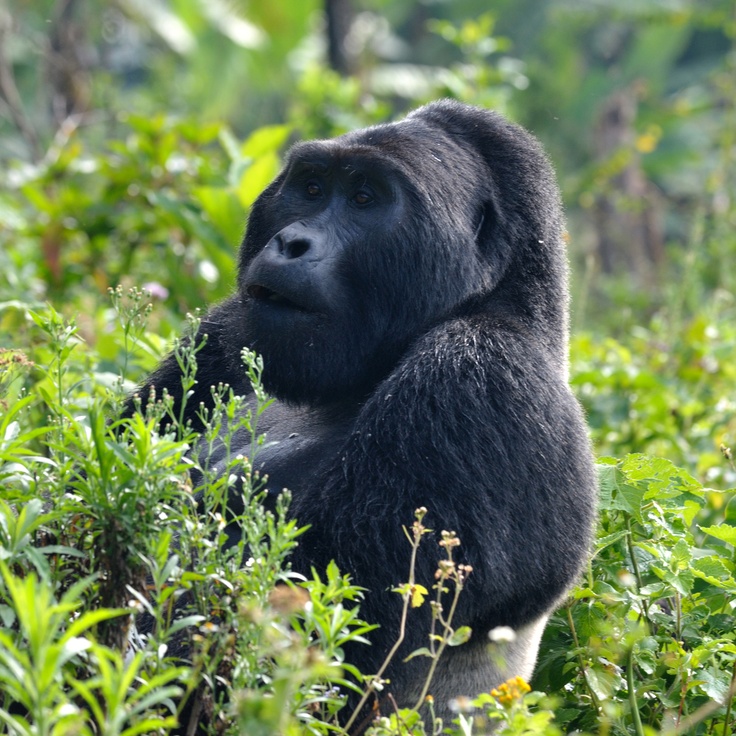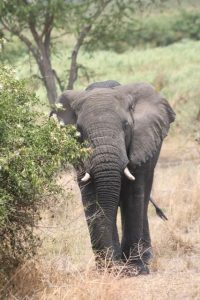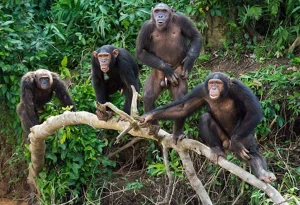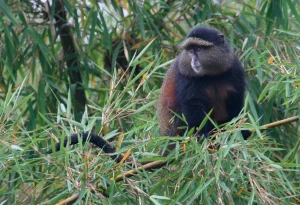Gorilla trekking is one of the most unique wildlife experiences in the world, allowing visitors to see endangered mountain gorillas in their natural habitats in Uganda, Rwanda, and the Democratic Republic of Congo (DRC). Beyond the thrill of the encounter, gorilla trekking plays a vital role in conservation. Revenue from trekking permits, community programs, and conservation initiatives has helped protect mountain gorillas from the brink of extinction. How Gorilla Trekking Benefits Conservation.
How does gorilla trekking help protect gorillas?
Gorilla trekking directly contributes to the protection of gorillas by providing the financial resources needed to guard them against threats like poaching, habitat loss, and disease. When visitors purchase trekking permits, the funds are used to maintain national parks, pay rangers, and support conservation programs.
Mountain gorillas once faced a severe population decline due to hunting and encroachment on their habitats. Thanks to strict protection measures funded partly by tourism, their numbers have grown steadily. The International Union for Conservation of Nature (IUCN) reclassified mountain gorillas from “Critically Endangered” to “Endangered” in 2018, showing that conservation strategies linked to tourism have made a measurable impact. How Gorilla Trekking Benefits Conservation.
How do gorilla trekking fees support conservation?
Gorilla trekking permits are among the most expensive wildlife experiences, and this is intentional. In Rwanda, a permit costs around $1,500 per person, while Uganda charges $800. The majority of this fee goes directly into conservation. How Gorilla Trekking Benefits Conservation.
Permit revenue helps fund:
- Ranger patrols to deter poachers.
- Veterinary care for injured or sick gorillas.
- Habitat monitoring and protection.
- Research programs that track gorilla populations.
Without this steady stream of income, conservation agencies would struggle to protect these apes and their environments effectively.
How does gorilla trekking benefit local communities?
One of the most effective conservation strategies is ensuring that local people benefit from protecting wildlife. Gorilla trekking provides jobs as rangers, guides, porters, and lodge staff. Revenue-sharing programs also fund schools, healthcare centers, and infrastructure projects.
In Uganda, for example, 20% of park entry fees are shared with surrounding communities. This creates a financial incentive for residents to protect gorillas and their habitats instead of turning to activities like illegal hunting or deforestation. How Gorilla Trekking Benefits Conservation.
What role does tourism play in gorilla conservation?
Tourism is a critical driver of gorilla conservation. The attention generated by trekking experiences raises global awareness of the species’ plight. Media coverage, travel blogs, and documentaries encourage donations and advocacy, while also boosting international support for conservation laws.
Additionally, tourism strengthens political will. Governments are more likely to prioritize protecting gorilla habitats when they see clear economic benefits from sustainable tourism.
How do gorilla trekking permits fund anti-poaching efforts?
Anti-poaching patrols are expensive but essential—Gorilla trekking permit fees finance ranger salaries, training, and equipment like GPS systems and communication devices. Rangers patrol daily to remove snares, monitor gorilla groups, and deter illegal logging.
In many cases, former poachers are employed as rangers, turning past threats into allies for conservation. This approach reduces poaching while creating jobs in conservation.
How does gorilla trekking help preserve gorilla habitats?
Mountain gorillas live in lush forests at high elevations, such as the Bwindi Impenetrable National Park and Volcanoes National Park. These habitats are constantly under pressure from agricultural expansion and settlement growth.
By generating significant income through trekking, these areas gain economic value that outweighs the short-term benefits of clearing land. Protected status is reinforced, and forest ecosystems remain intact, benefiting not only gorillas but also countless other species.
How is gorilla trekking linked to wildlife research?
Gorilla trekking programs provide essential funding for scientific research. Conservationists use trekking encounters to observe gorilla behavior, track their health, and collect data. This information helps design better protection strategies and understand the effects of environmental changes on gorilla populations.
Tourist presence also helps locate and monitor gorilla groups regularly, ensuring they remain safe and accounted for.
How does gorilla trekking reduce poaching?
Increased human presence in protected areas, combined with ranger patrols funded by tourism, significantly reduces poaching. The economic value of live gorillas surpasses the short-term gain from hunting them, making poaching less appealing.
In many cases, former poachers have become guides or rangers, turning potential threats into conservation advocates.
What conservation projects are funded by gorilla trekking?
Gorilla trekking funds a range of conservation projects, including:
- Gorilla Doctors Program: Provides veterinary care for wild gorillas.
- Habitat restoration projects: Reforesting degraded areas.
- Education programs: Teaching communities about conservation.
- Anti-snare campaigns: Removing traps that injure wildlife.
These programs rely heavily on income from gorilla tourism to continue operating.
How does gorilla trekking promote environmental awareness?
Visitors who trek to see gorillas often become lifelong advocates for wildlife. Experiencing these great apes up close fosters a personal connection, making tourists more likely to support conservation causes financially and politically.
Furthermore, documentaries, travel articles, and social media posts inspired by treks reach millions, spreading awareness far beyond the trekking regions.
How does gorilla trekking contribute to sustainable tourism?
Gorilla trekking is a prime example of sustainable tourism—balancing visitor experiences with wildlife protection. Only small groups of tourists are allowed to visit a gorilla group each day, minimizing disturbance. Strict guidelines, such as maintaining a 7-meter distance and wearing masks during visits, protect gorillas from human diseases.
The focus on low-impact, high-value tourism ensures long-term benefits for conservation without overburdening the environment.
How is gorilla trekking managed to protect gorillas from disease?
Gorillas share about 98% of their DNA with humans, making them highly susceptible to human illnesses. Trekking regulations require tourists to wear masks, avoid direct contact, and stay away if they feel unwell.
Daily monitoring ensures gorillas are healthy, and sick individuals can receive treatment quickly if necessary. These measures have proven effective in preventing outbreaks that could devastate populations.
What percentage of gorilla trekking fees goes to conservation?
The percentage varies by country, but a significant portion—often 70% or more—goes directly to conservation programs and park management. The remaining funds support community development projects and tourism infrastructure.
This model ensures both wildlife and people benefit from tourism revenue.
How has gorilla trekking impacted mountain gorilla populations?
In the 1980s, there were fewer than 250 mountain gorillas in the wild. Today, thanks to concerted conservation efforts supported by tourism, their numbers have risen to over 1,000 individuals.
This growth is a direct result of anti-poaching measures, habitat protection, and veterinary care—all of which are funded partly through trekking.
What are the long-term conservation benefits of gorilla trekking?
The long-term benefits include:
- Stable or growing gorilla populations.
- Preserved ecosystems.
- Economic stability for surrounding communities.
- Increased global awareness and advocacy for wildlife protection.
When managed responsibly, gorilla trekking ensures future generations can continue to experience these incredible creatures in the wild while maintaining healthy ecosystems.
Final Thoughts
Gorilla trekking is far more than an extraordinary wildlife encounter—it’s a vital conservation tool. From funding anti-poaching patrols to supporting local communities, it demonstrates how responsible tourism can safeguard endangered species. By choosing regulated, ethical trekking experiences, visitors directly contribute to the ongoing survival of mountain gorillas.




